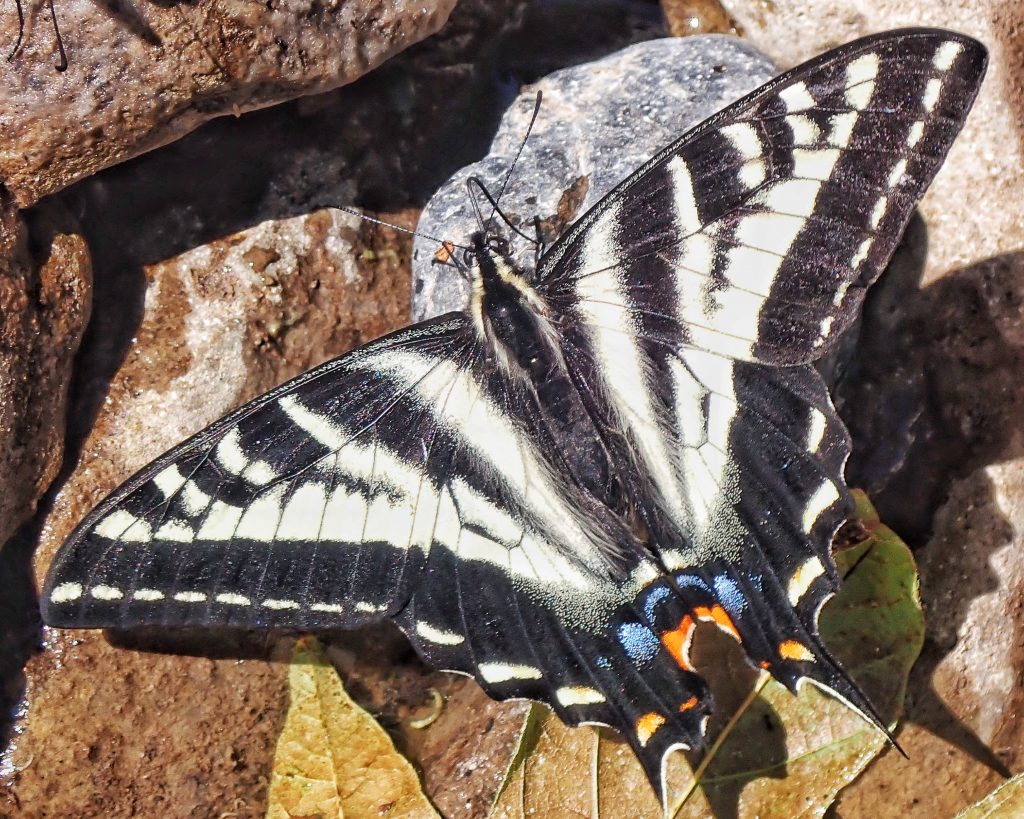
It has been a banner year for swallowtails! Seems that I see either Pale Swallowtails or Western Tiger Swallowtails everywhere I go, and often they are flying in the same area, which isn’t surprising since they not only share some larval hosts, but the ones they don’t actually share often grow in similar areas. I was fishing on Canyon Creek in Clark County, Washington last week and there were dozens of both species flying all about me.
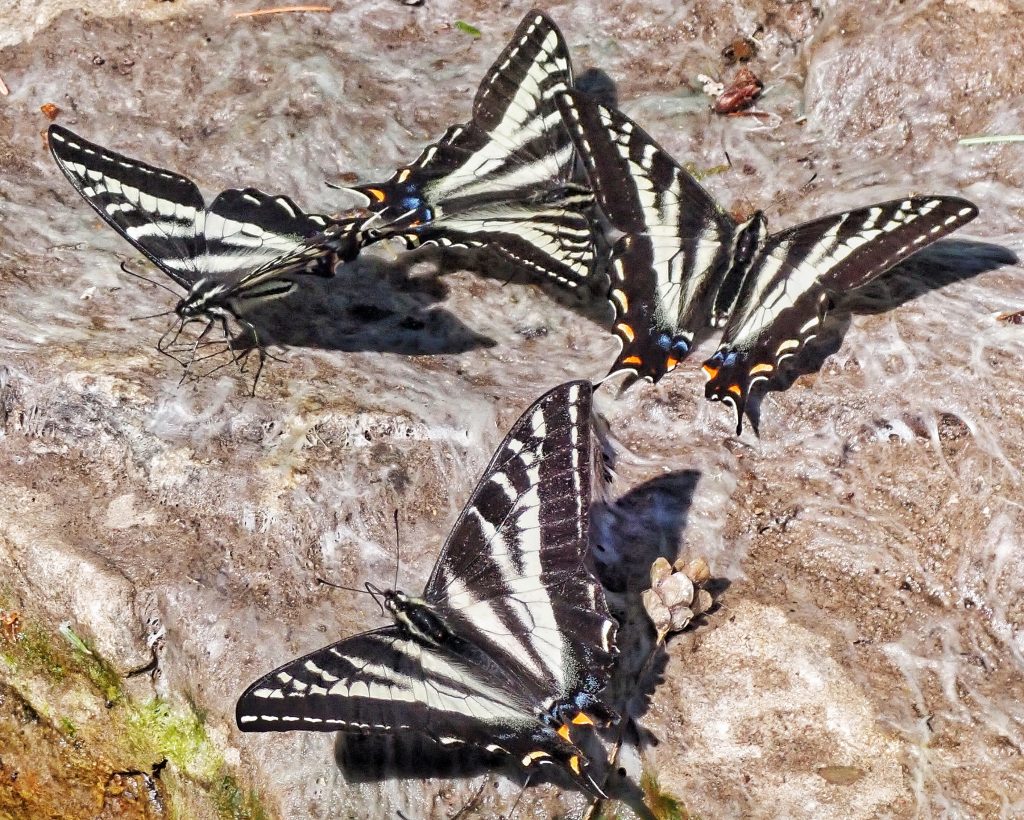
In fact they formed a large, mixed species puddle party (butterflies ‘puddle’ or ‘mud’ to get salts and minerals, and need it to be wet so they can draw them through their proboscis) on some wet, algae covered rocks near where I was fishing. Unfortunately all I had for a camera was my little TG 5, which is made for macro stuff. But the fish weren’t biting then anyway, so I belly crawled over the rock and managed to get within a few feet, and got some photos that, with some extensive cropping, turned out acceptable. It’s really nice to have both species together for a comparison (which is why I posted these two profiles back to back, and link to the Western Tigers), because sometimes one sees washed out or pale Western Tiger Swallowtails (P. rutulus) that seem like they could be Pale Tiger Swallowtails (P. eurymedon). But seeing them side by side it’s obvious how much broader the stripes are on the P. eurymedon.
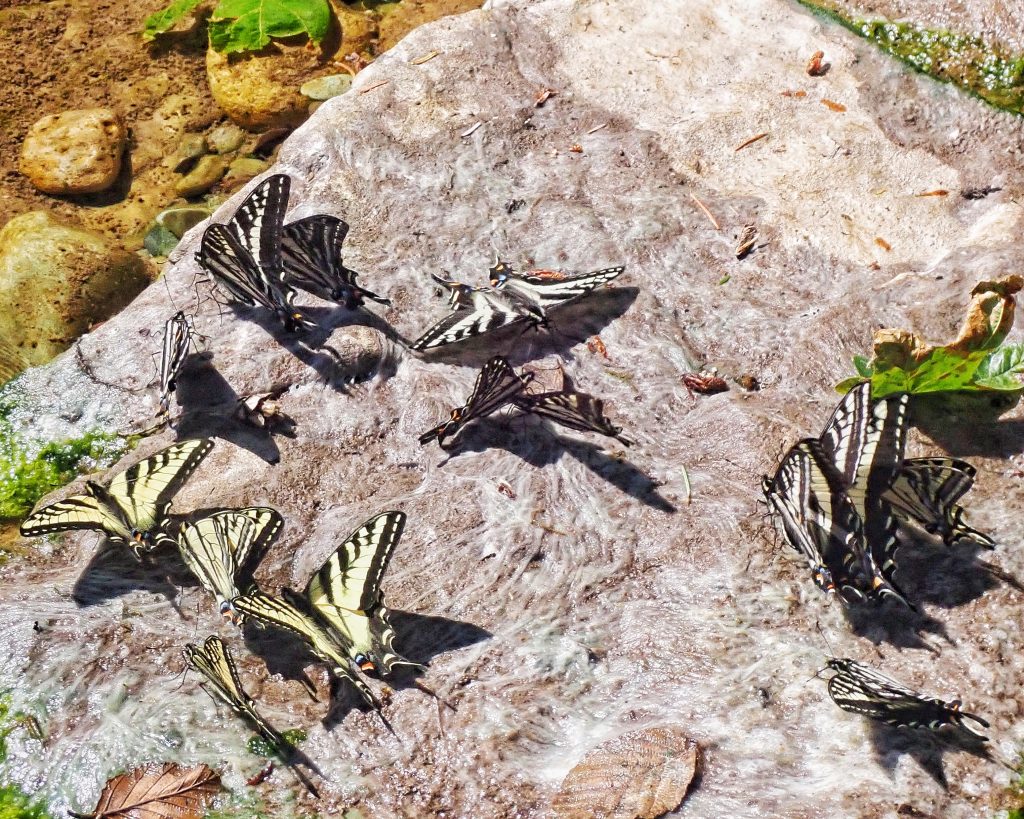
I haven’t kept records or anything, but I would guess I see 10 of these flying, with their gentle but erratic swoops, (mostly along roads , forest edges and balds) for every one I see perched. And of those that are perched the vast majority are puddling. It is relatively rare that I see one nectaring, and the majority of those have been on red columbine, where they are so aggressive that they shake the whole plant. After I had written and scheduled this post, and as if to both prove me wrong and prove me right, I found a few Pale Tiger Swallowtails, whilst fishing on the Little White Salmon, that were actually perched and nectaring. All of them were on red Columbine, and they were so vigorous that this was the only half decent photo I got of one.
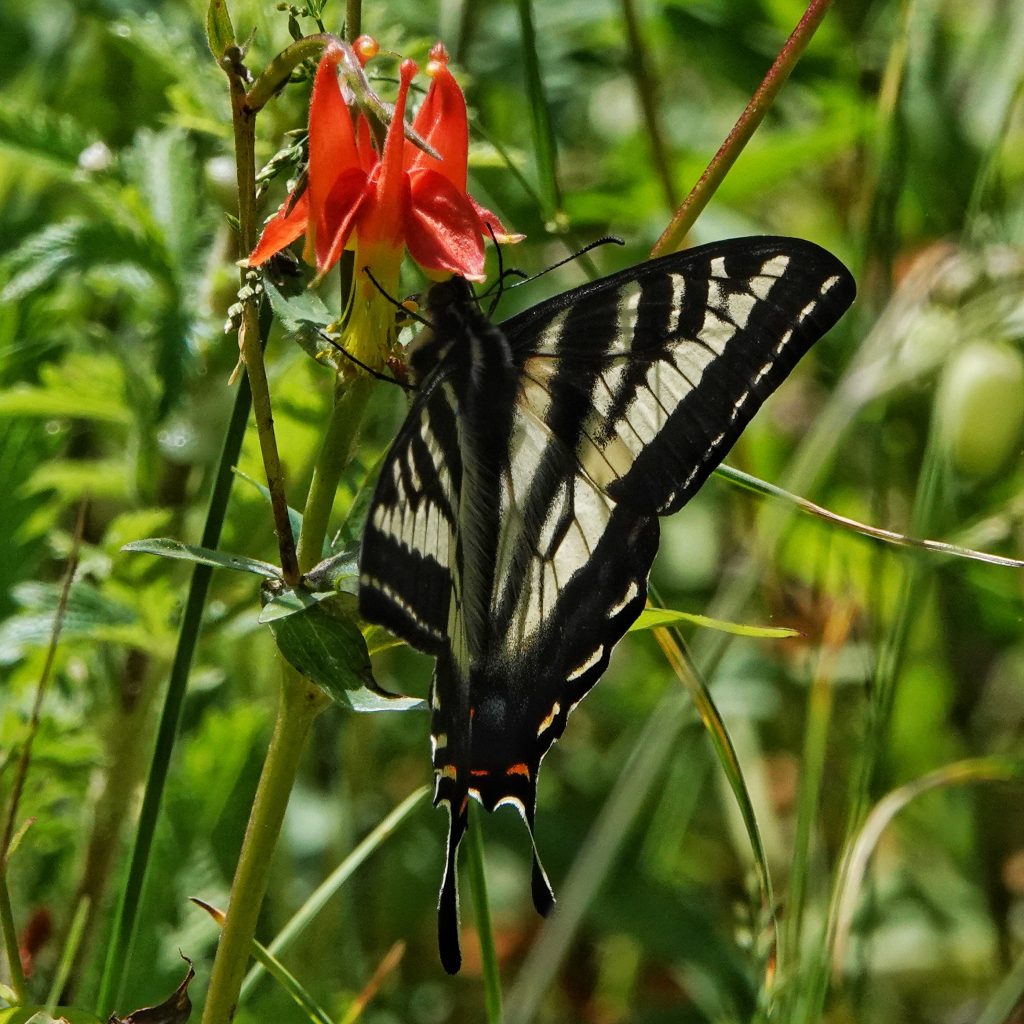
Description-Large (up to 3” wingspan), white with thick black stripes and forewing border; has a single ‘tail’, at the base of which is a bright orange crescent; has narrow blue marks near the hindwing margin, and bright orange caudal spots.
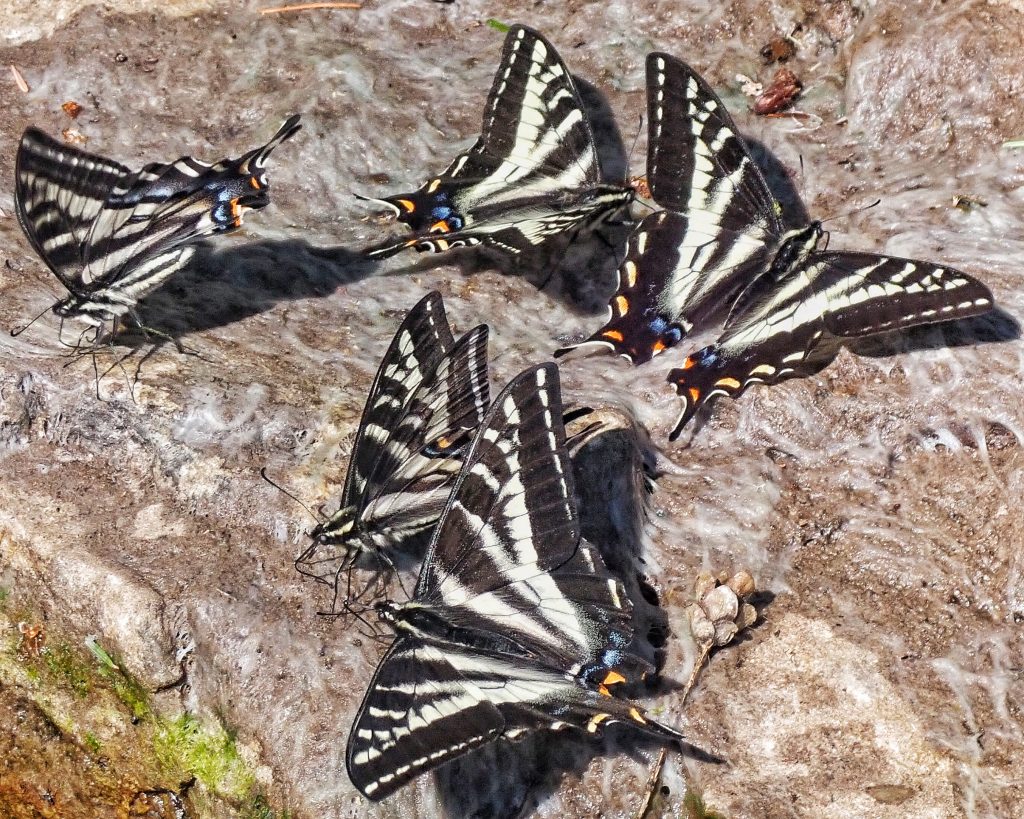
Similar species–Papilio rutulus and P. canadensis are yellow and black, with narrower black markings, and a narrower black border, and have a yellow crescent at the base of the ‘tail’; P. multicaudata is yellow and black, with even narrower stripes, is much larger (up to 5” wingspan), and has two tails; other swallowtails are not ‘tiger striped’, and have extensive black on the front of the forewing.
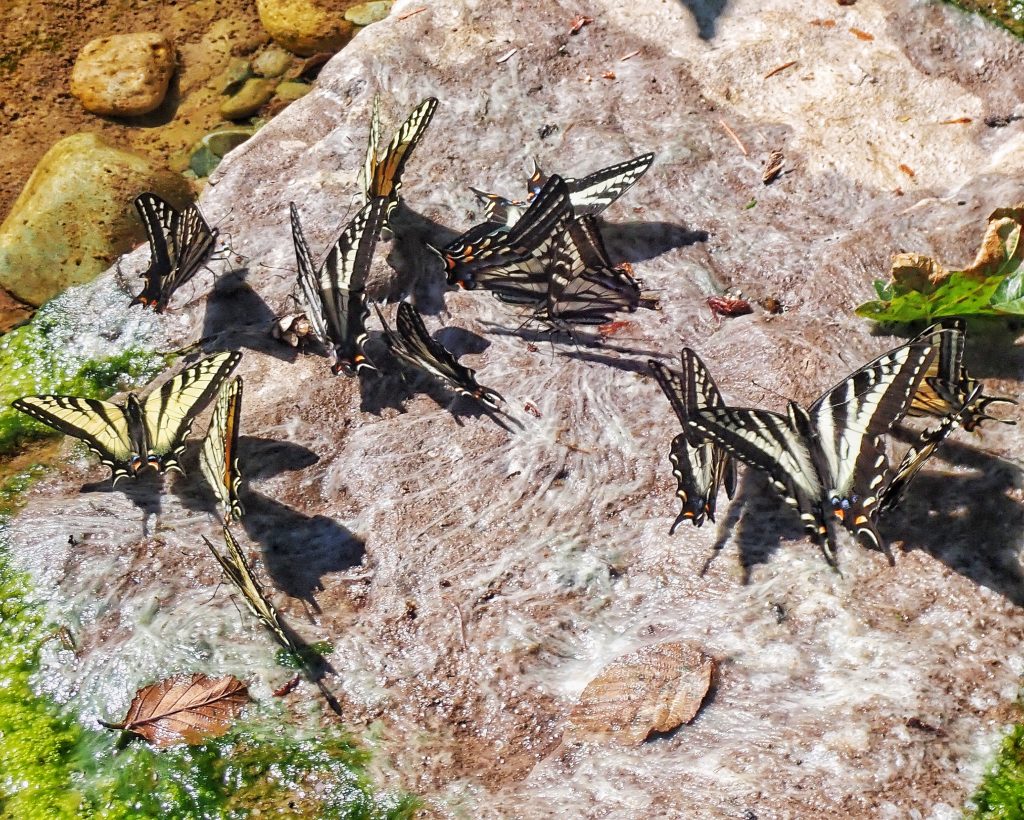
Habitat-Forests and woodlands containing their larval hosts
Range-From the Rockies and their associated ranges to the Pacific; region wide in appropriate habitat.
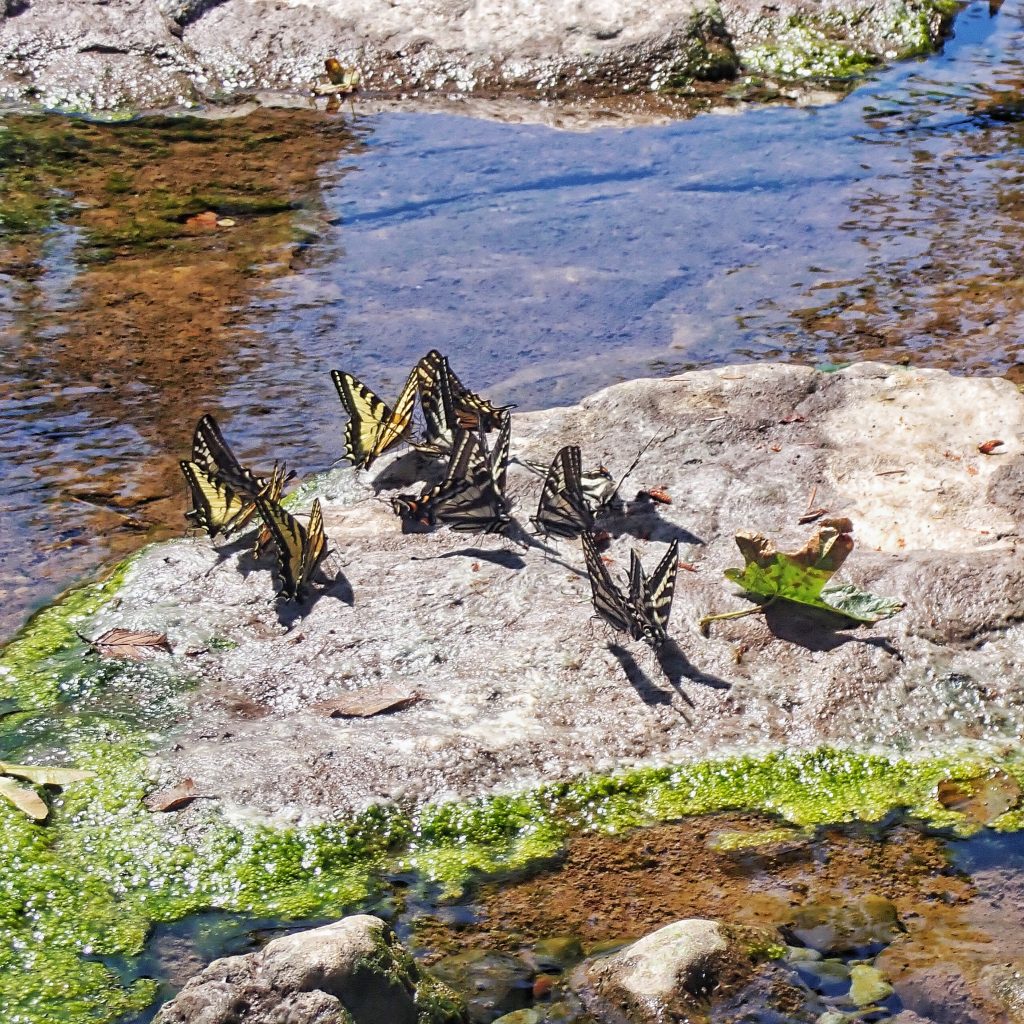
Eats-Larval hosts are primarily red alder and cascara west of the Cascades, and Ceanothus sp. on the eastside; will also utilize spirea, serviceberry, ocean spray, and bitter cherry; adults nectar at a nariety of flowers, including columbines, Columbia lily, penstemons, Cardamine sp., phlox, and lilacs; frequent puddler.
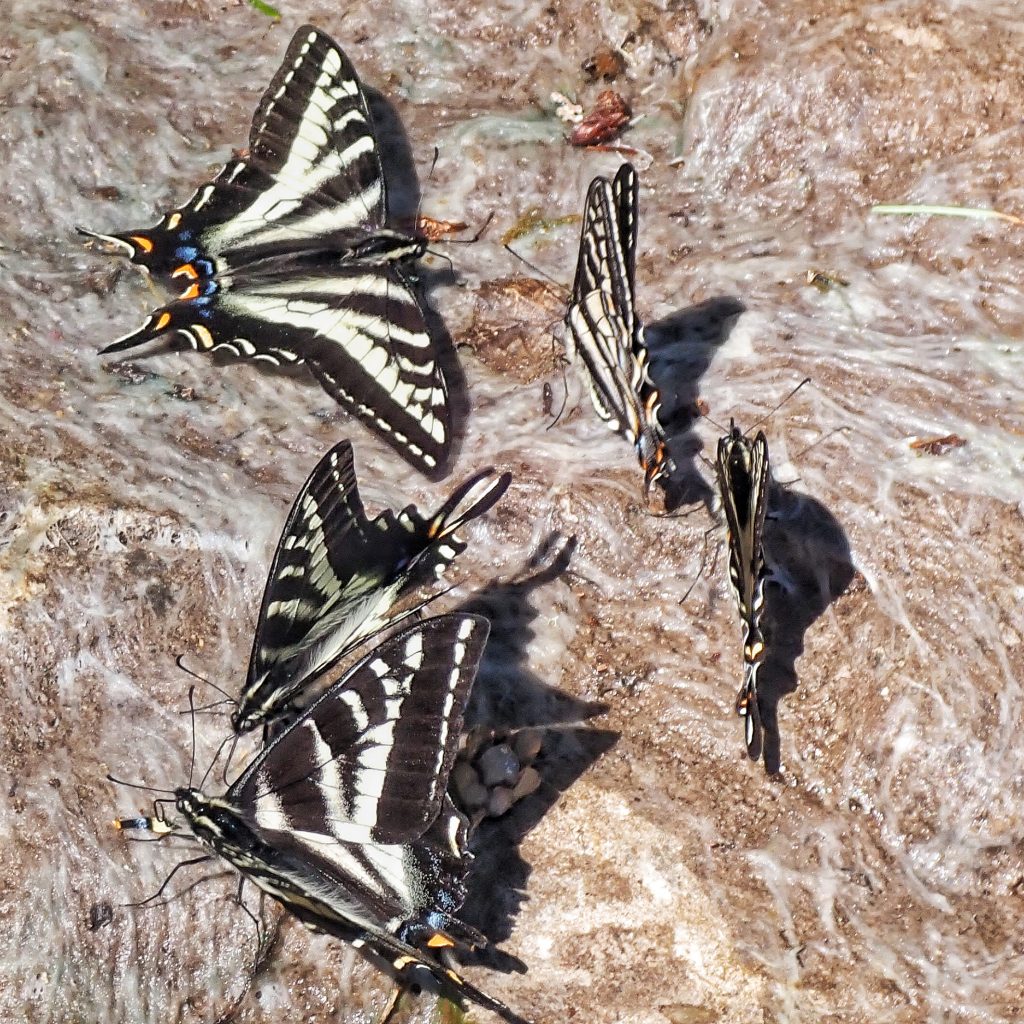
Eaten by-Probably any insectivore that can catch and subdue them; caterpillars are parasitized by Ichneumonid wasps, especially those in the genus Trogus, and by the Chalcedon wasp Trichogramma deion, as well as by Tachinid and other parasitic flies.
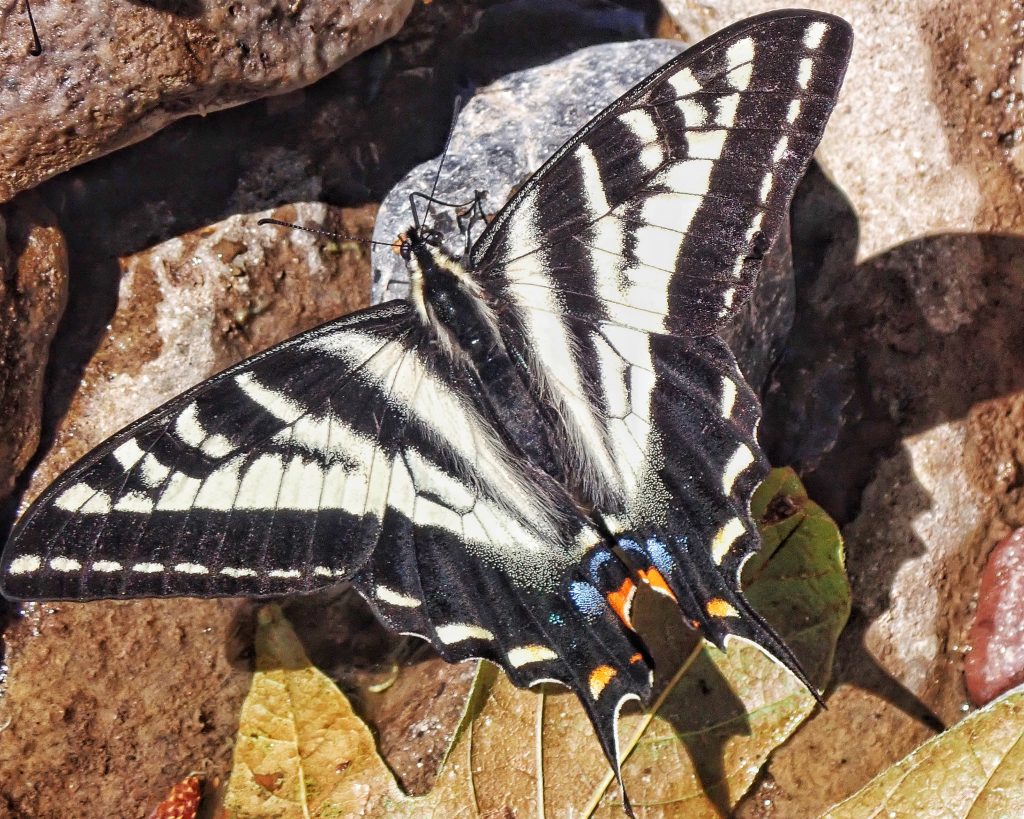
Adults active– May through September, depending on the warmth of the year and the elevation
Life cycle-Eggs are laid singly on the top of the host plant’s leaves, and hatch in 9-10 days, and the hatchling eats the egg shell; first instar lasts 5-6 days, and maturation takes 5-6 weeks; overwinter as pupae; univoltine in our region
Etymology of names–Papilio is from the Latin word for butterfly. The specific epithet eurymedon is from the Latin words for ‘broad guardian’, and refers to the wide, black wing borders.
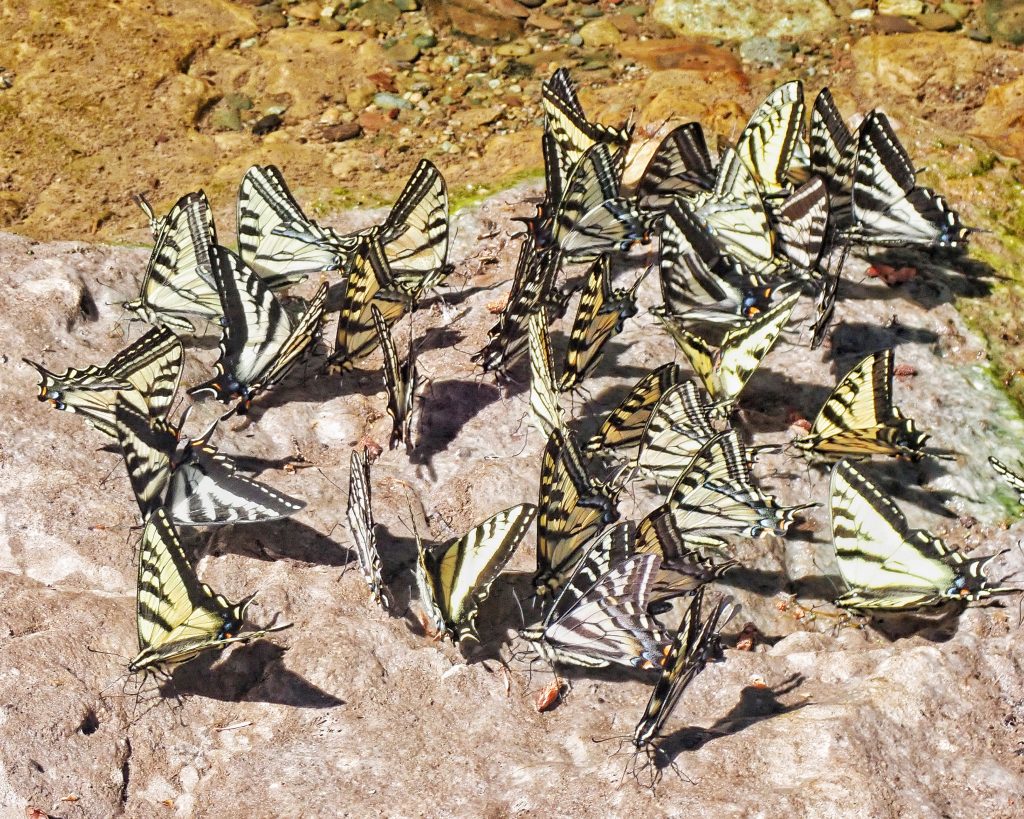
http://northwestbutterflies.blogspot.com/2015/05/species-profile-swallowtails.html
https://www.butterfliesandmoths.org/species/Papilio-eurymedon
https://butterfly.ucdavis.edu/butterfly/papilio/eurymedon
https://www.butterfliesoforegon.com/papilio-eurymedon
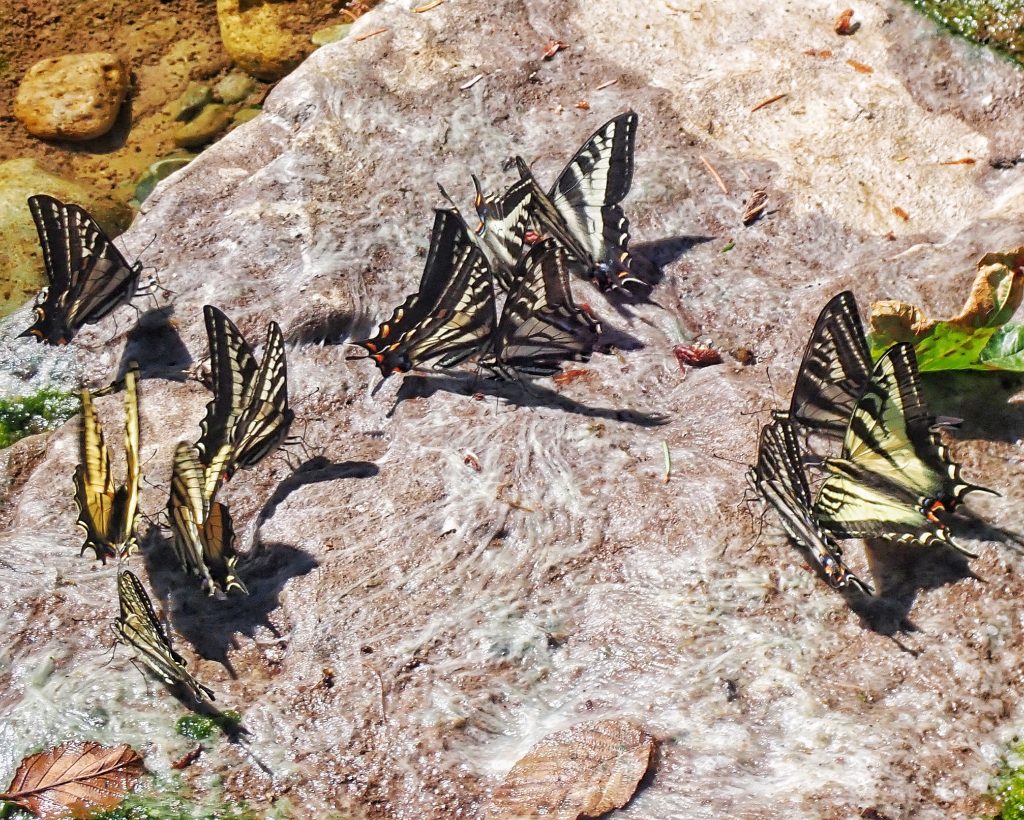
2 thoughts on “Papilio eurymedon (Pale Tiger Swallowtails)”